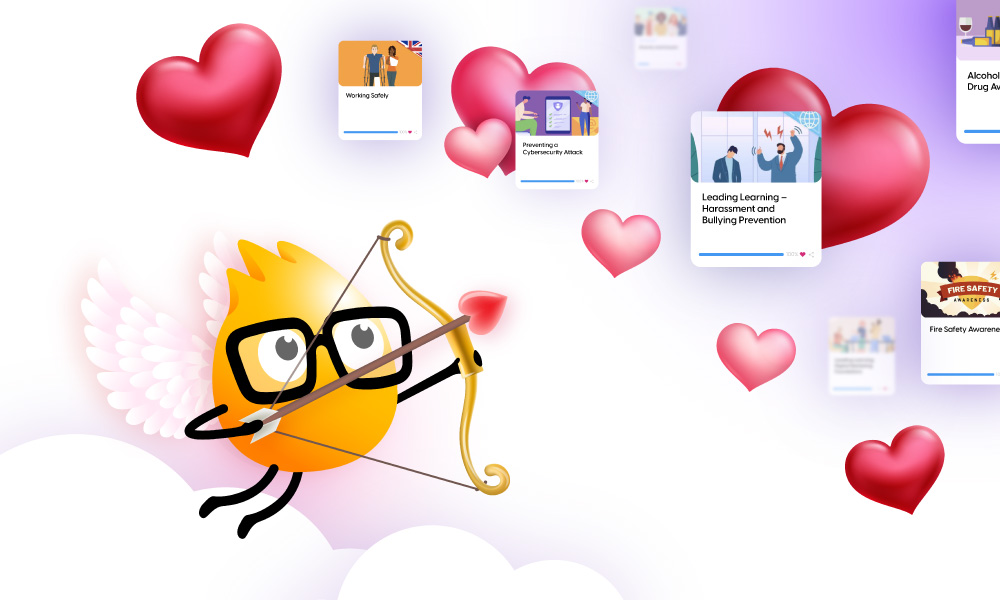The pros and cons of adaptive learning
Among the many areas drawing interest of late is that of adaptive learning. Enabled by technology advances, we can now begin to change learning on the fly. This can be a good thing, but it can also be used poorly, and can be a source of unnecessary confusion.
The origin of adaptive learning really was born from the research in intelligent tutoring systems. The original ones used artificial intelligence models of expert performance to guide learners when solving problems. And, indeed, they could achieve better outcomes than classroom instruction, but not as good as one-to-one tutoring.
The promise today is that with adaptive learning, we can give individual learners what they need, and achieve those better outcomes. It’s important to note that there are several paths to adaptivity, with different strengths and weaknesses.
Adaptivity
Steps along the way to an adaptive experience include differentiation, personalization, and full adaptivity. Understanding the differences between them is important to comprehend the possibilities and requirements.
To start with, we can differentiate learning based upon some groupings. In education, for instance, we could have an advanced reading group, regular reading group, and the developmental group. In industry, this might mean training courses with different examples and practices to use a device or sell it to different markets. For instance, a scientific testing device might be used different in a medical context versus the food industry. Or you might have different sales materials to address banks versus insurance clients.
The benefit is to minimize the transfer difference in learning while keeping the costs of redundancy low. Learners will be seeing and performing in situations closer to their area of interest and need, leading to better outcomes. Yet the content development isn’t completely redundant, leveraging the introductions and concepts with only slight changes in examples and practice.
This, however, is just grouping. Can we do something unique because of who the learner is, or their preferences? For example, we could try to address things like learning style, gender, or generation with our learning designs. That, however, would be contrary to what science tells us about learning. These are myths! The general rule is to design the learning for the desired outcome, not the learner. Yes, you need to understand your audience, but that determines what you include, not how you change.
Instead, if we really did want to adapt to learners, there are better bases. For one, we can adapt based upon their prior knowledge, such as having richer introductions to those with less experience. We also can adapt based upon learner performance; for example, we could ramp up the difficulty when learners are excelling and simplify when they’re struggling.
The level of granularity is the issue. Do we only have a single alternative path that’s slow or fast, or do we have a rich suite of content to draw upon? This will determine how much adaptation we can perform. And this is really a continuum: we can vary from simple branches to sensitive systems with a completely dynamic model.
We can also adapt based upon how long ago they saw material and how likely it is to have faded. Particularly if they can study different modules at different rates, as some learning may fade faster than others.
The real issue is that there are tradeoffs in the development. As with pretty much everything else, with more effort and resources, you get more power. The question is what the potential costs are and the potential benefits.
Alternatives
In structure, intelligent tutoring systems used several models to provide unique responses to learner choices. Expert models of performance in the domain were coupled with models of the particular learner and tutoring knowledge. Then, the tutoring system would compare what the learner did with what an expert would do and intervened appropriately to address the discrepancy based upon their model of intervention.
While the work necessary for intelligent tutoring systems doesn’t necessarily scale well, this core element of models holds true for true adaptivity as well, but they are simplified in different ways. The simplest model is different feedback for wrong answers on questions, but this isn’t truly adaptive.
A next level up has just a model of several different learners, and differentiates the course based upon which category learners fit in. Here, we have some redundancy in content and sequence differently for different learners. We could just have examples and practice in different roles, and then learners in one role would see their own example first (being more closely related) and then challenged with a different role.
Going further, personalization can take several forms. We can have learners ‘test out’ of content that they already know, and only see content that’s new or needs to be refreshed. Thus, we have a model of a learner’s specific knowledge and gaps.
A richer model of knowledge can have granulated practices of different difficulty. Here, if the learner is doing well, we can move them more quickly up the difficulty gradient, while if they’re struggling we can slow down or even step back. This is based upon the learner’s actual performance on problems.
A very rich model would include their knowledge of different areas that they’re learning in. With this model, we can take into account how long it’s been since they’ve seen something and start sequencing their learning based upon what’s near to be forgotten. If we model each learner individually based upon how they perform and what they’ve seen, and how frequently they’re accessing learning, we have a basis for doing a very finely personalized knowledge development and maintenance picture.
What it takes
What we’re seeing here is a continuum from still hardwired separate paths to a true resequencing of independent content by rules. The latter puts certain constraints on the necessary infrastructure required.
An adaptive system is, effectively, a series of content elements drawn from by rules instead of pre-sequencing. This is the same architecture modern web content marketing systems use to customize the customer display and experience. For instance, rules determine the match between what you’ve just done and what others have chosen when presenting a “people like you also looked at”, or “recommendations”.
A content system requires rigor in content development. Content management, strategy, and engineering all come into play. There needs to be careful development of discrete content elements, with a rich suite of tags, so that content can be accessed by description. And content must be maintained; reviewed for relevance and accuracy. An entire field of content management has emerged that’s relevant here.
Similar discipline is required around rules for learning. Rules can stipulate moving up, or back, in difficulty, choosing the right content for the learner, when a learner should need a refresher in a particular topic, and update the model of their knowledge. Rules are based upon pedagogical approaches from learning science, but ultimately machine learning may be able to tune those rules.
Putting the content elements, and the rules together is non-trivial. Such efforts require an understanding of learning science for both, in different ways. Yet, done properly, the potential is for optimized learning for each individual.
And if you’re outsourcing to a platform, the above gives you some guidance. First, make sure that their underlying pedagogy withstands scrutiny. Do they have enough variation in the material to support appropriate transfer? Sufficient practice to develop skills? And then, what’s their adaptive mechanism? There’s a worry if it’s ‘let the instructor choose’ (instructors typically aren’t learning scientists). There should be scrutable principles, whether differentiation by roles, adjusting difficulty, estimating forgetting, etc. No myths, please.
When Adaptivity
Adaptivity is an increasingly possible, and desirable outcome. However, the requirements to do it ‘right’ mean that it can’t be implemented in an ad hoc manner. A ‘learning engineering’ approach, applying learning science with technological sophistication is required.
Simple rules can provide simple benefits. Skipping known sections or adjusting difficulty can accelerate learning. Similarly, spacing to address forgetting can be even more powerful. Ultimately, we will be able to tailor learning experiences to account for learner, recent events, current context, and more.
It’s important to note that adaptivity is not a panacea. Adaptivity on top of bad design is still bad design! And, in general, more benefits will likely come from investing in good design than will come from adaptivity. Once the foundation of learning is established, however, then adaptivity can add extra value. And we’re still exploring what instructional design means in this new age.
Adaptivity is desirable but being prepared to do it in ways that will deliver real value is not trivial. It is the wave of the future, but only you can decide whether, or when, it makes sense for you. However, understanding the basics makes you better prepared to succeed.





